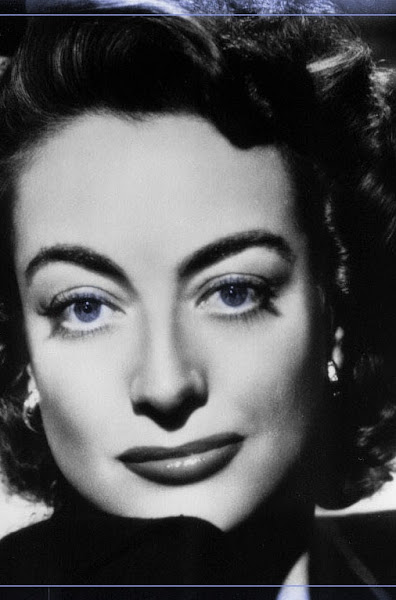
“Conducting” Anna’s Death: The Climactic Train Scene in “Anna Karenina” (1935)
Clarence Brown’s 1935 Hollywood adaptation of “Anna Karenina,” starring Greta Garbo, ignores the novelistic implications of Anna’s death by instating a new reason—as film scholar Irina Makoveeva indicates (pg. 56), “it is because of her unwillingness to free Vronsky the officer.” Anna’s death is, then, because of her attempt to defy patriarchal order. Therefore, as she watches Vronsky depart the train station for the Serbian War, she is wearing all black, a significant marker of death, hers being impending because of the “rules” of the “adultery myth” and because of her transgression against patriarchal order. In fact, it seems that in the way the train that takes Anna’s life is a force that is conducted, the train scene at the end of her life is also “conducted” by the score and sound effects (in conjunction with editing, framing, and performance). In essence, the tapping of the railway worker’s hammer puts him in control of the tempo of the music and the editing, so he is like the “conductor” of the cinematic “orchestra” leading to Anna’s demise. Thus, his role as the “musical conductor” fulfills the omen early in the novel (and film) that the railway worker’s death foreshadows Anna’s similar death. Basically, Anna’s “conducted” death, the film implies, is a result of forces far more powerful than her.
The climactic train scene takes place late one evening while Anna sits alone in the station, a small figure in the foreground while the omnipotent train stretches across the background. It is at this point that viewers recognize how insignificant Anna is in comparison to the huge train that will engineer her doom. Meanwhile, a railway worker taps the wheels and hitches of the train to check their soundness. Harp music plays non-diegetically, a sound that generally indicates something strange is “in the air.” In addition, it could be interpreted as “warming up” or “tuning,” as in the harps are preparing to begin the “orchestral movement” that will culminate abruptly with Anna’s impending death. The next shot is a medium one of Anna sitting expressionless listening to the hammering of the railway worker, which could be interpreted as the “conductor tapping his baton,” readying the “orchestra.” Anna’s eyes dash to the off-screen right, and viewers get a point-of-view shot as she studies the railway worker continuing his work on the train. The reaction shot is a medium-long shot of Anna still watching, her curiosity piqued. She slowly rises and walks towards the railway worker while a tracking shot follows her. In the score, the strings have been joined by trumpets, which have entered with steady quarter notes to signify the growing tension. The music begins to speed up as Anna goes to her mark on the platform. Another medium-long shot reveals the railway worker walking briskly around the train, continuing to tap the wheels and hitches, “keeping time,” while Anna looks down into the space between the two cars at which he had originally been standing. The next shot is a medium-close-up, point-of-view shot of that space—smoke billows out from under the car while the train whistles and the bell clings off-screen. The bell not only signifies the beginning of the train’s movement but also denotes the beginning of the next “musical movement” that will culminate with Anna’s demise. The next shot is of Anna peering down into the hole with her eyes betraying a look of desire. The music is continuing to speed up. From here, crosscutting reveals the train starting to move—a close-up shot shows the whistle going off again, and another close-up shows the train conductor’s hand moving. In fact, the conductor himself is basically anonymous—the conductor’s hand might as well be “the hand of fate” in action. The camera returns to a close-up of the train’s wheels continuing to move. The music is beginning to grow louder and louder as the wheels chug along, and the railway worker—the “conductor”—clanks steadily faster and faster off-screen, accelerating the tempo. The purpose of the speed is to underline how overwhelming and inescapable Anna’s fate is. The trumpets’ musical triplets, which, in effect, imitate the circular nature of the train wheels turning and, thus, the inevitability of Anna’s fate, are also growing louder in pitch and faster in tempo. Anna watches the wheels go around and around as the railway worker’s “conducting” makes the music and the crosscutting between the images of Anna and the wheels on the tracks grow ever faster. The music continues accelerating thanks to the tempo of the railway worker’s quickening hammering, and finally, a medium shot lingers on Anna as she suddenly leaps under the train in the off-screen right. The instruments in the score, especially the trumpets, sustain a screeching whole note during Anna’s leap—a sound that sustains the shock of the moment for audiences. Just as quickly as they built, the music and the rapid editing disappear immediately afterward, and the clanging ends abruptly with a different tone, as though the “conductor” has signaled the “orchestra” to stop with the sound of a dropped “baton” or “drumstick” (being that his hammer sounds more like that of a drummer’s stick than that of a baton, although the maestro uses a baton in his conduction). The scene concludes with the illuminated train chugging quietly into the night accompanied only by the sound of its whistle.
The tension built by the combination of music and sound effects (along with editing, framing, and performance) has done its job to see that Anna goes under the train to her fate. The railway worker, whose death foreshadows Anna’s death in Tolstoy’s novel, plays the role of “conductor,” ironically “conducting” the tempo of the score that will reflect the tension building until Anna’s death, just like a train conductor takes control of the train under which Anna’s life will be extinguished. In addition, everything about the train implies the idea of fate—for example, the anonymous hand of the conductor symbolizes “the hand of fate,” mapping the destiny of Anna the adulteress. Also, as the sound of the railway worker’s off-screen hammering “conducts” the tempo for the score, the repeated triplets of the trumpets reveal circularity much like the turning of wheels and indicate a propensity toward destiny. Therefore, the film’s score at the climactic train scene—a force greater than Anna, especially because it is external and off-screen—“orchestrates” the adulteress’ inevitable death.
May 18, 2009
Random Musing: Anna Karenina (1935)
Labels:
random musings
Subscribe to:
Post Comments (Atom)

.jpg)

.jpg)
.jpg)

No comments:
Post a Comment